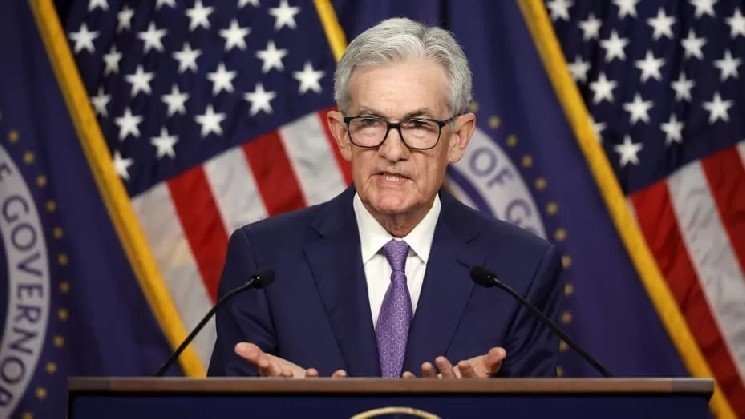Following the announcement of the Fed’s interest rate decision, Chairman Jerome Powell will hold a live press conference.
All highlights of Powell’s speech are:
- The unemployment rate remained low, but it rose.
- Inflation has been rising recently and remains at a slightly higher level.
- Employment growth is slowing down, increasing the negative risk to employment.
- Economic growth has slowed down.
- The unemployment rate has not changed significantly compared to last year.
- The slower GDP growth is primarily reflecting a slower consumer spending.
- The decline in immigration and lower labor participation have slowed employment growth significantly.
- Employment growth appears to be below break-even.
- The labor market is not as active as it used to be and is somewhat weaker.
- Product inflation continues to accelerate and services inflation continues to decline.
- From next year onwards, most indicators of inflation expectations are in line with the 2% target.
- The overall impact of tariffs on inflation is not yet clear. The baseline scenario is that the impact of tariffs on inflation will be short-lived. You need to manage the risk of sustained inflation.
- Inflation risk tends to have benefits.
- We have the ability to intervene in time.
- Politics is not on a fixed course.
- The changing risk suggests that interest rate cuts today are appropriate.
- We are firmly committed to the Fed’s independence.
- The committee continues to pursue double mission goals. Some tariffs actually affect the labor market.
- The rise in prices due to tariffs is expected to continue this year and next year.
- Revised employment data suggests that the labour market is no longer robust.
- Today there is no broad support for rate reduction of 50 basis points.
- Today’s discounts can be considered as risk management discounts.
- The state of labor market risk has changed significantly since the last Fed meeting.
- This should be considered in policy making as the labor market is cooled.
- Wage data is just one factor that suggests that the labor market is cooling.
- They must continue to work to recover 2% inflation.
- The risk of rising inflation is lower than in April.
- In a summary of the economic forecast, policymakers outlined an interest rate roadmap aimed at reducing inflation to 2% over time.
You can refresh the page to see the latest updates on Powell’s speech.
Nine months later, the Fed reduced its policy rate by 25 basis points, down to the 4%-4.25% range. This is the first cut from the second half of 2024, and economists are hoping at least one cut will continue this year.
The Federal Reserve usually raises and holds interest rates to curb inflation and reduces them to support economic growth. But after taking a long cautious approach due to inflation concerns, the agency has recently taken a step to cut back after weak employment data.
Federal Reserve Chairman Jerome Powell admitted that tariffs are beginning to affect consumer prices, but said this would be a one-off price impact rather than permanent inflationary pressure.
At the meeting, newly appointed Federal Reserve member Stephen Milan opposed the decision, saying he supported a more offensive 50 basis point cut. Milan was the first candidate to President Donald Trump to attend the meeting on September 15th.
Meanwhile, Lisa Cook, a Fed member whom Trump had tried to dismiss, also attended the meeting after receiving permission from the Court of Appeal to continue his duties.
*This is not investment advice.


